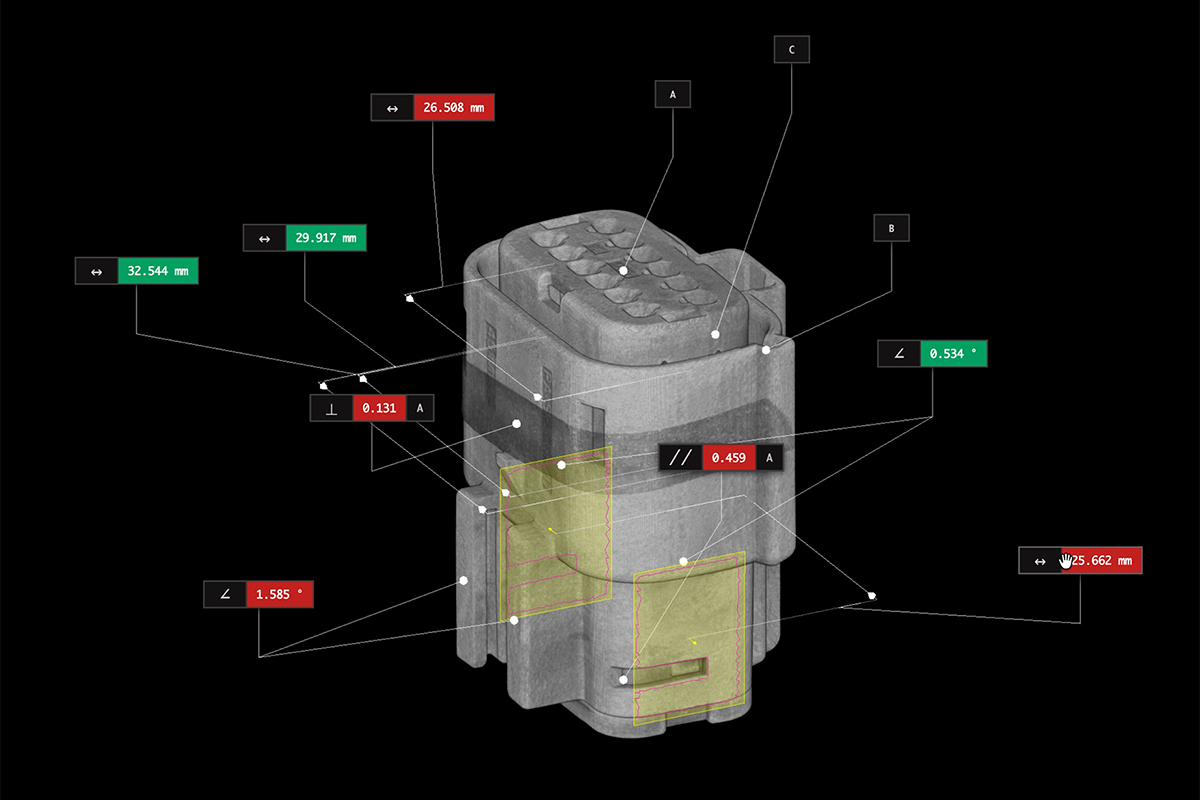Inside Tomy handheld games
Nothing beats the magic of rediscovering a favorite childhood toy. In our latest collaboration with Adam Savage, we delve into the intricate mechanics of Tomy’s classic handheld games, Digital Derby Auto Raceway and Copter Combat. Using our Neptune industrial X-ray CT scanner, we uncover the complex inner workings of these pre-digital era toys, revealing the ingenuity and craftsmanship that defined a generation's playtime.
Digital Derby Auto Raceway
Digital Derby Auto Raceway, a product of the late 1970s, stands out as a mechanical marvel that predates the era of digital handheld games. This game mimics a car racing experience and relies on a series of gear trains and a small electric motor. It’s powered by two type C batteries, though it operates without any digital components.
The game’s gears are meticulously arranged to drive the movement of the cars and the scrolling of the track, crafting a convincing illusion of a car race. The game's functionality hinges on this precision, ensuring smooth operation. Complementing this, mechanical switches play a crucial role, diverging from modern digital games. These switches control essential functions, such as initiating gameplay and activating the crash mechanism, integral to the game's interactive nature.
Digital Derby employs a rack and pinion steering mechanism, adeptly converting the steering wheel's rotational motion into lateral movement within the game, simulating realistic car manipulation. CT reveals contact arms that interact with slots on a film strip, representing obstacles or other cars. As the player navigates, these arms move across the film, with alignment to a slot triggering a crash simulation. The game also boasts a transmission system that allows players to shift gear ratios, adding strategic depth to the gameplay. A mechanical counter tracks progress, and a crash system responds to in-game collisions, both of which are mechanically integrated into the game's design.
Each of these components plays a vital role in creating the engaging and challenging experience of the game. The absence of microcontrollers and reliance on purely mechanical components make the Digital Derby Auto Raceway a fascinating study in the evolution of gaming technology.
Explore the scan
Copter Combat
Copter Combat, another Tomy creation, is an entirely mechanical game with no need for batteries or electronic components. The game is powered by a wind-up mechanism, featuring a a tightly wound spring and ratchet system. The CT scans reveal a swinging arm mechanism that moves a spool of film, similar to 16mm film, back and forth to display the game's visuals.
A continuous film strip, containing images of the targets, advances through the game using a sprocket mechanism akin to classic film projectors. It features a catch mechanism that aligns with slots in the film when the player successfully 'hits' a target, triggering a spring and altering the display to provide a responsive and accurate scoring method.
The design of Copter Combat reflects careful engineering and manufacturing considerations. The non-orthogonal gears and other components are designed to be self-aligning and tolerant of manufacturing variances, which is crucial for mass-produced toys. The CT scans reveal a design that's both robust and durable, suitable for the rough handling expected from a child's toy.
Explore the scan
Conclusion
Both the Digital Derby Auto Raceway and Copter Combat exemplify a unique era in gaming history. These games bridge the gap between mechanical toys and the advent of digital gaming, showcasing the creativity and mechanical ingenuity of the time. The CT scans provide a rare glimpse into the inner workings of these games, revealing the complexity and thoughtfulness behind their designs. Beyond the joys of nostalgia, industrial CT shines a light on the mechanical ingenuity of the past.










